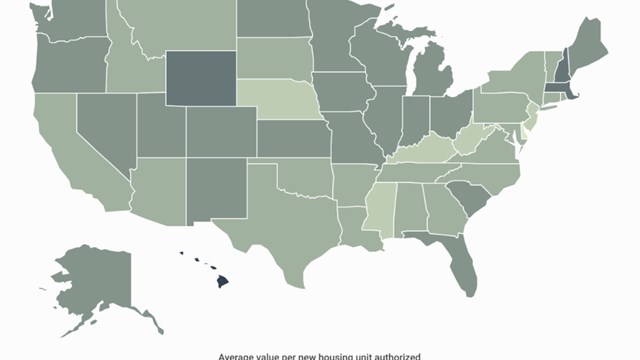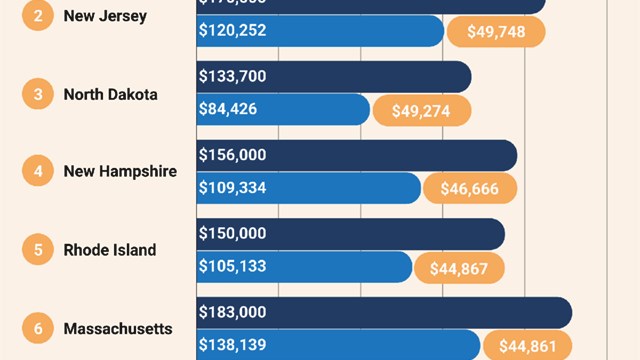At the beginning of 2009, the New York real estate market was as frozen as the ice at the Rockefeller Plaza skating rink. The collapse of Bear Stearns and bankruptcy by Lehman Brothers on September 15, 2008—a day still mentioned in hushed tones by real estate professionals—symbolized the monumental subprime mortgage crisis and slowed the rate of transactions to a pace best described as glacial.
For the first time in a long time, no one knew what was going to happen. With prices plummeting and inventory rising, anything seemed possible—even a long, drawn-out period of deflation in the historically iron-clad New York City market—and real estate professionals were searching for silver linings and steeling themselves for the worst.
“I’ve been in business for 35 years,” says Diane Ramirez, president of Halstead Property, LLC, “and I have never seen such a standstill. You jump off the cliff and think, ‘Where is the bottom?’ It was unknown territory.”
It was a buyers’ market—if the buyers would only show up. According to the real estate industry insiders, they stayed away for the rest of ‘08, and most of the winter of ’09, and then, gradually, they started to come around again.
“The first quarter was as blah as predicted,” Elizabeth Stribling, president of Stribling & Associates, says of 2009. “The surprise was that the last quarter was a good last quarter.”
Transactions picked up. Prices did not—but they at least stopped their freefall. And as the ice melted in the spring, the market began to show signs of life. “The year blessedly unfolded better than any of us expected,” says Ramirez.
Harriet Kaufman, an executive managing director with Warburg Realty, vastly exceeded her expectations for 2009—but it wasn’t easy. “Emotionally, it was very draining,” she says. “I handled several estates, and heirs who thought they would get a lot more money. These were people who had to sell. It was gut-wrenching, but it worked.”
Will Less Be More?
A year ago, one of the biggest impediments to a rebound in the market was the glutted inventory. New developments, so desirable two years ago, only added to the number of available homes. Before any recovery could begin, the first step was bring the inventory down to a normal level. Interviewed last winter, Kaufman said of 2009, “Best case scenario is, we get rid of some of the inventory at reasonably attractive prices.”
Generally speaking, that has come to pass.
“We saw some light beginning in April of 2009,” says Ramirez. “We began to see some stability—which is not the same thing as ‘stable’.” Movement in the spring, she says, was probably sparked by a combination of first-time buyers jumping into the market to take advantage of tax incentives, and price reductions.
But “it wasn’t just price drops,” adds Stribling. “People were tired of waiting. They wanted to move. That will continue.”
The excess inventory moved so well, in fact, that in 2010, the opposite problem presents itself; not enough listings. On its face, this shouldn’t be a problem—after all, for the seller’s market to return, demand must exceed supply, which it has already started to do. “There are two times as many buyers as listings,” Ramirez reports.
So what’s the issue? The available apartments are not, for the most part, choice.
“There is very little quality inventory,” says Ramirez. “People who do not have to sell are not selling right now, for obvious reasons.”
Kaufman agrees. “There’s a lot of bad inventory.”
The lion’s share of apartments on the market are the result of the four D’s: death, divorce, destitution, and development. Everyone who can is staying put. And even the new buyers are exercising caution.
“The deals that are being made are extremely fragile,” says Stribling. “Each deal is held together by a thread.”
Trivial matters that are the everyday stuff of the real estate business—taking a day longer to sign the contract than the seller was expecting, for example, or pushing back the closing a week—are threatening to blow deals apart. Just getting to the finish line, then, is an accomplishment. As Kaufman said—gut-wrenching.
Markets Within Markets
Complicating matters is the fact that New York real estate is not a single, monolithic market, but rather a combination of smaller markets, not all of which interrelate exactly.
For example, commercial real estate, which continues to sag, does not have much correlation with residential sales. The former is financed by investment money, which has been battered by the recession; the latter is paid for by individuals—private money for private homes. While mortgages are more difficult to obtain than they were five years ago, stringent lending is not the same as no lending.
“We should emphasize that commercial real estate and residential real estate in New York City have never had as much direct correlation as you might imagine,” says Stribling. “I don’t see [a depressed commercial market] having an adverse effect.”
Similarly, it’s not accurate to say that sales – or even prices – are down across the board. The market is too variegated for that. Apartments in prewar buildings on the Upper West Side, for example, are still few and far between. If you list a particularly charming one right now, it is likely to get scooped up quickly, recession or no.
“There’s not a segment that doesn’t have property,” Ramirez says. “It’s market by market, size and segments.”
In terms of type of property, developments remain iffy, while renovated resale apartments are the biggest sellers right now. As far as individual neighborhoods go, Harlem has not bounced back as quickly as downtown, and the East 50s remains slow, Kaufman says. And in this kind of bear market, the crown jewel apartments—the $10 million listings—have been sitting like so many white elephants. “You’re not seeing as many sales at the very high end,” she says. “The Astor apartment took ages to sell, in a top-notch building.”
The Price Is Right, Right?
Overall, the hoped-for, if not expected, surge in prices has not happened. Sellers praying for a swift return to 2007 values have been disappointed, say the experts.
“Prices will be flat—some may go up,” says Stribling. “We’ll have a fairly flat year—but that’s not bad.”
The beginning of 2009 was an extreme buyer’s market, says Ramirez. “As the year unfolded, things bottomed out. We’re still in a buyer’s market, but at a healthy level. I’m looking for transactions,” she says, “not higher sales prices.”
A critical component to getting the market flowing again is the management of seller expectations. The days when you could buy an apartment, install new fixtures and appliances, and sell it a year later at considerable profit are, for the moment, gone. Potential sellers are starting to realize this.
“Expectations are changing,” says Kaufman, “which is a good thing for us.”
In the wake of the financial fallout, there were so many unknown variables that no one knew how to price their apartments. Realtors identified the problem, and began to re-think the pricing process. Halstead, for example, implemented a program called “Value Factor,” which established a calculus for how apartments were listed.
The program has been a success, according to Ramirez. “Of more than 300 properties, 55 percent have closed or are in contract.” And she says that listings for participating apartments get 50 percent more traffic on the Halstead website. Ramirez credits that program—and similar ones at other agencies—for cushioning what could have been a devastating blow. “We got ahead of the curve,” she says. “Many of the other markets [across the country] did not.”
So, while prices remain flat, they are appropriate to the new economic realities—and that’s the first step toward a full recovery. “It’s all about pricing correctly,” says Kaufman. “You can sell anything, at the right price.”
Broker Carol E. Levy, who specializes in high-end properties, agrees, and said the market has definitely turned around of late. "I had already begun to feel a difference last spring. Historically as the summer comes, things slow down but then I really felt a push forward and a melting last fall. At the coming of the new year, I was having open houses, I am having open houses with 25 to 40 people coming to open houses. That was really not happening since Wall Street collapsed in the spring before. Now I’m even having some bidding wars, particularly when which I handle high-end properties, the cream of the crop, there’s been very little change since two years ago.
"I’ve sold 31 apartments so far this year," Levy continued. "I’ve been absolutely inundated and am getting some record-breaking prices in some buildings. Prices are almost up to where they were two years ago and some even higher, it depends on the apartment, it depends how it shows. I had three apartments last week, actually four go into contract. Three of the four were at the highest prices per share for those buildings. So it really started after the first of the year where I saw a huge onslaught of people who were holding back."
One difference from two years ago, says Levy, is that there is definitely more scrutiny from banks and lenders and it is much tougher these days to get a mortgage. One essential, she says, is that you'll probably need at least a 20 percent downpayment, and you need pristine credit, and sound financial documentation. "Even if it’s a condo. I tell people to forget about 90 percent financing. Again you want to have good credit scores. I mean there are ways you can work on your credit. I’m working with a client now who does not have great credit, and I said, 'you know what, it’s better, based on where the banks are now – if it was two years ago you’d be OK – to take yourself out of the market for two to three months, clean up your credit.' Whereas two years ago they would have been fine but now they’re dotting every I and crossing every T. But if you do qualify, there are wonderful rates out there. That is one thing that has not changed. Everyone wants to get in on the market but they have to be aware of how clean they have to look on paper."
Banks and mortgage lenders are more particular about the buyer and new federal laws and regulations have tightened up the lending criteria, Levy said. "There are now new federal laws and regulations. They will not send out any appraisal until they have all the disclosure on the building. Again it’s not only the buyer who’s being more highly scrutinized, it’s the property that’s being more highly scrutinized. The banks have much more control over what’s happening."
Some buyers seeking to buy into new construction cannot unless the building has a high amount of units already sold or they're able to pay in all cash, she added. "Two years ago, it wouldn’t have mattered. It could have been very low ownership but the banks would have lent on it. They would have had no problems with it being a new conversion or a new construction but now it’s an issue."
The Crystal Ball
So what’s on the residential real estate horizon?
Stephen Kliegerman, executive director of Halstead Development Marketing, believes the real estate market is settling down, and after coming off such a high from the boom years, there was no question it had to fall. Construction was at an all-time high, the highest it had been in 30 years. Then after the Lehman Brothers collapse, construction just stopped. But the one saving grace for New York City is that it is extremely resilient, he said. "This time New York City bucked the system. New York City has fared much better than most other states. We lost 135,000 jobs but we were projected to lose 230,000 jobs when Lehman fell."
“As far as long term, New York is New York,” says Stribling, a Georgia native who moved here at seven, fell in love with the city, and never looked back. “I have no qualms at all. I’m extremely optimistic on the long term health of New York. People want to be here. They like it here.”
And they find that repatriating to the suburbs is not as financially beneficial as it once was. “Moving to the suburbs is not necessarily a bargain,” she says. “Taxes on homes in the suburbs are very high. The schools aren’t as good as they used to be. Moving to Mamaroneck or Great Neck isn’t the savings they think it is.”
Meanwhile, the economy continues to show signs of life. Technically, the recession is already over. But historically, unemployment rates lag behind other economic indicators. As the stock market, the trade deficit, and consumer confidence rise, unemployment will decrease. When that happens—whether it’s in six months or two years—that’s when the seller’s market will return.
“It’s all about jobs,” says Kaufman. “New York is a bonus-driven, Wall Street-driven city.”
One of the banes of the current market—new development—will be a boon to real estate prices in the future, Ramirez predicts. “The next challenge is that there’s very little new product,” she says. “When you look at the number of permits, new development is off by 87 percent—that's 87 percent below 2008 levels in Manhattan. That’s almost a standstill.” In two or three years, she says—just in time for a potential boom cycle—the current stoppage of new development will create a shortage of supply, and thus more demand.
The development sector, says Kliegerman, should finally recover by 2013 or 2014. "It's still a good marketplace, a healthy marketplace," he says.
Still, pending unforeseen disaster, 2010 should be a better year than 2009. “Last year, I said I was cautiously optimistic, but I had my fingers crossed,” says Ramirez. “This year, I’m optimistic but cautious, and my fingers are not crossed.”
Greg Olear is a freelance writer, novelist, and a frequent contributor to The Cooperator.







Leave a Comment